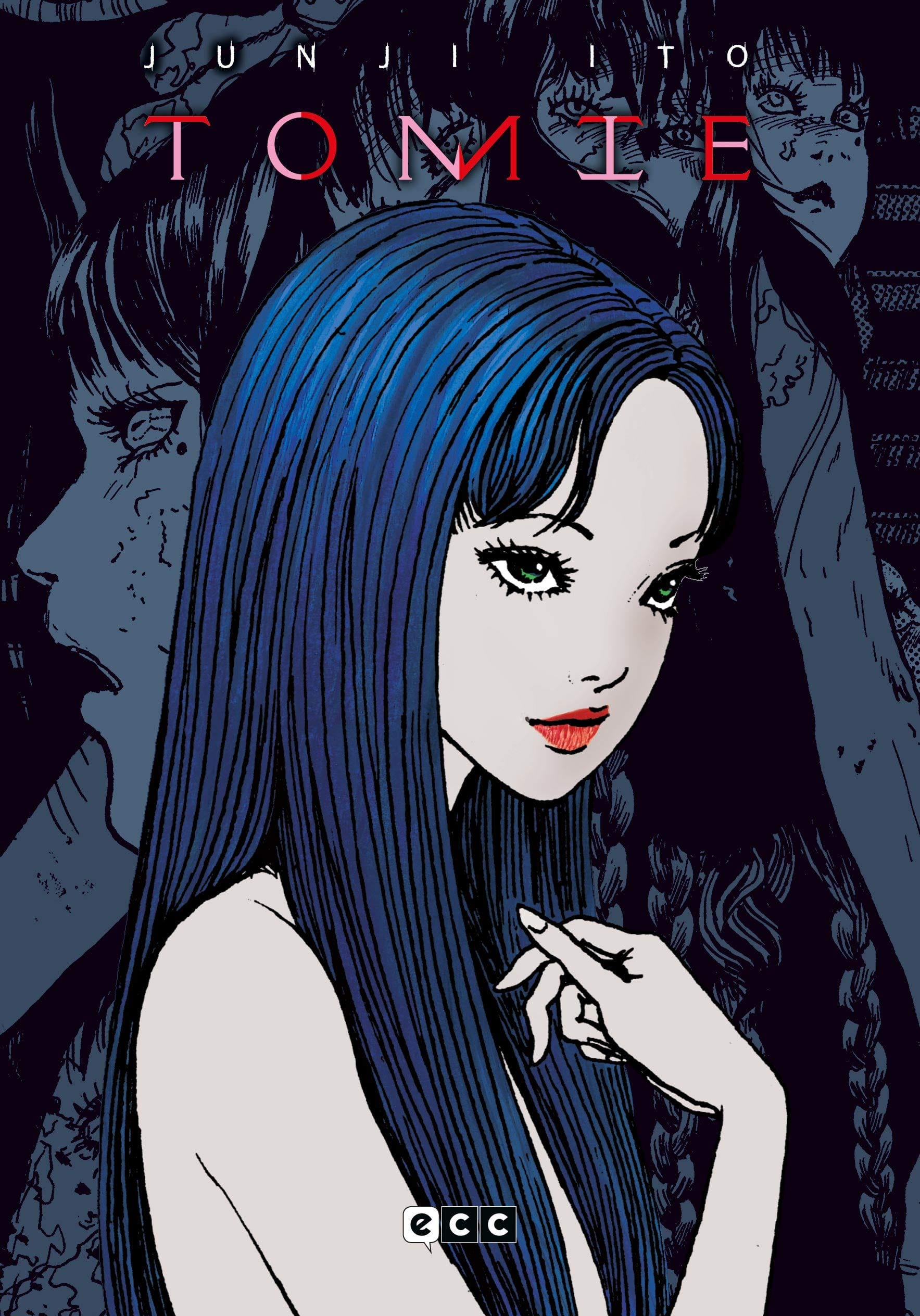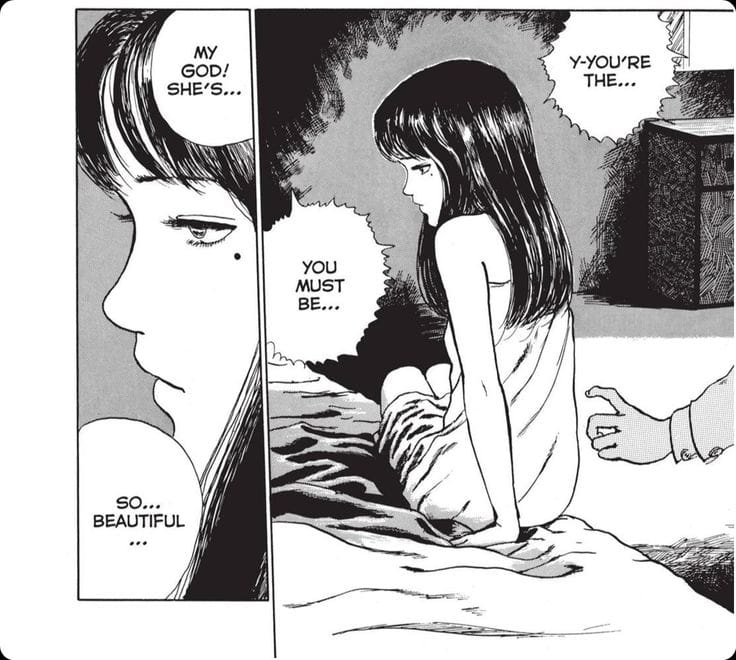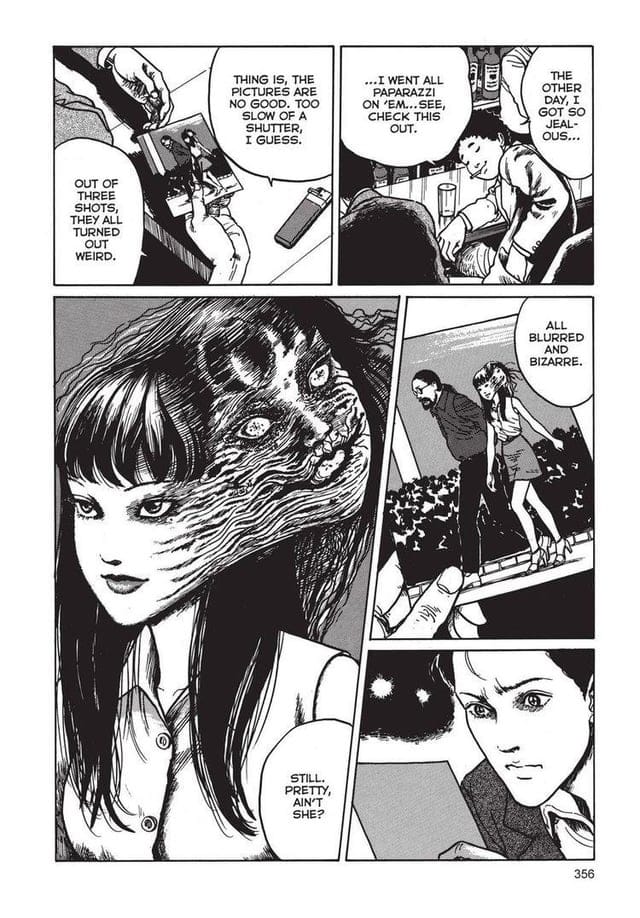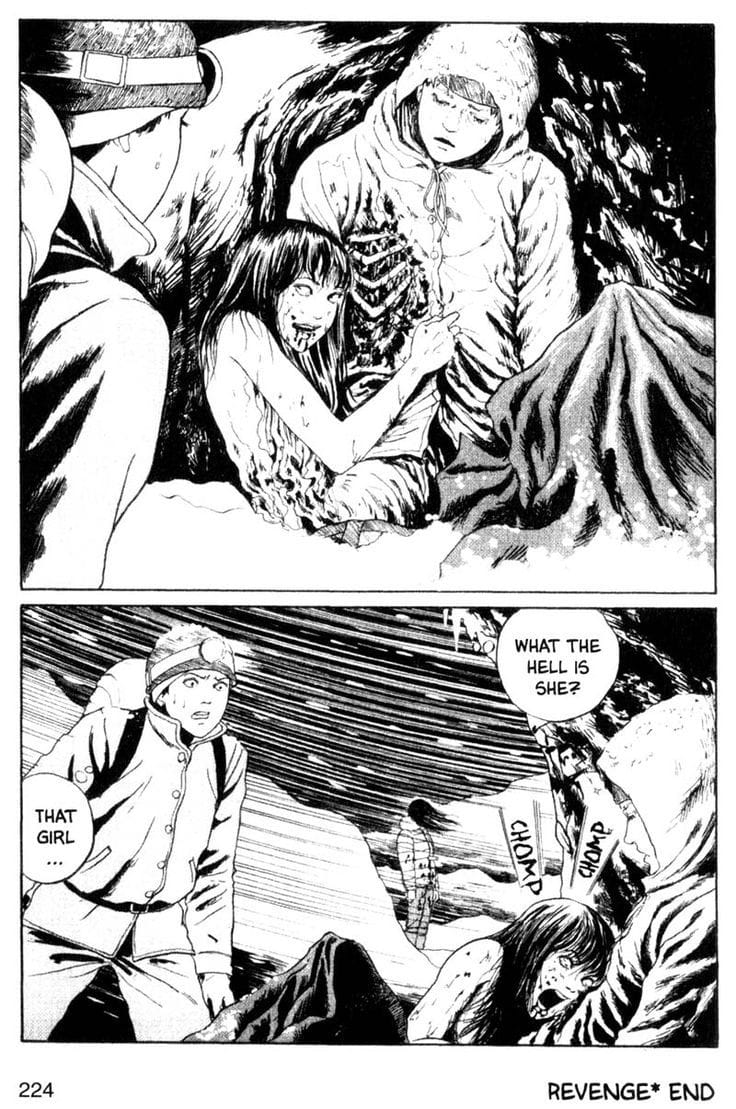Tomie is, without a doubt, hit Japanese comic artist Junji Ito's most popular recurring character. Within the context of Ito's horror anthologies, Tomie is a vengeful spirit who affects her wrath specifically on men—almost every story about her ends with the demise of the men she was seeing. A few exceptions to this norm exist, but they survive only if they prove to Tomie that they are not as lecherous and depraved as other men are.

The story of Tomie Kawakami, the vengeful spirit, began when she was only seventeen years old. She was groomed and impregnated by her high school teacher. Fearing repercussions, he manipulated some of her classmates into murdering, mutilating and discarding her remains during a field trip to the mountains. Declared missing during the trip, the school held a vigil, only for her to walk into class as if nothing had happened. Gone was the sweet and kind-hearted girl. In her place was a metaphysical spirit whose goal was to expose and punish the “true” violent and corrupt nature of men.

Intentionally making herself vulnerable would often mean that men would perpetually rape or kill her. After they have committed their cruelty, Tomie reveals her true face, that of a rotten corpse. Once she delivers a particular man's comeuppance, she appears in another corner of the world and the cycle begins again.

Like many vengeful women monsters in media, Tomie is a direct reflection of the horrors that women endure at the hands of a patriarchal society. Tomie's narrative, in particular, is a reflection of the cyclical nature of gender-based violence, one that will never end unless concrete action is taken. In Tomie’s home country of Japan, a study by Kyoto University found that 1 in 4 women have experienced violence from their intimate partners. This is why Tomie’s story has resonated with audiences since its introduction in 1987. It is a cry for help, aligned with the United Nations Sustainable Development Goal of Gender Equality.

With the worst of graphic violence enacted towards men who have wronged Tomie, Ito has often been accused of misandry. Critics and everyday readers alike have pointed out that Tomie is as much to blame as the capricious men, as she had seduced them into terrible acts. However, a deeper look into this phenomenon echoes the age-old tragedy of victim blaming that is often used to shame survivors and victims of gender-based violence. Here again, Tomie mirrors real-life circumstances that women face at the hands of the patriarchy.
Junji Ito’s Tomie serves as a chilling and powerful exploration of the cyclical nature of gender-based violence. Tomie Kawakami’s vengeance delves into the horrors real people endure in a patriarchal society. Her tale, which continues today in Junji Ito’s anthologies, highlights the need for continuous concrete action to break the cycle of violence.
Find out more about Tomie and other manga by Junji Ito by checking their VIZ artist page on www.viz.com/junji-ito.
